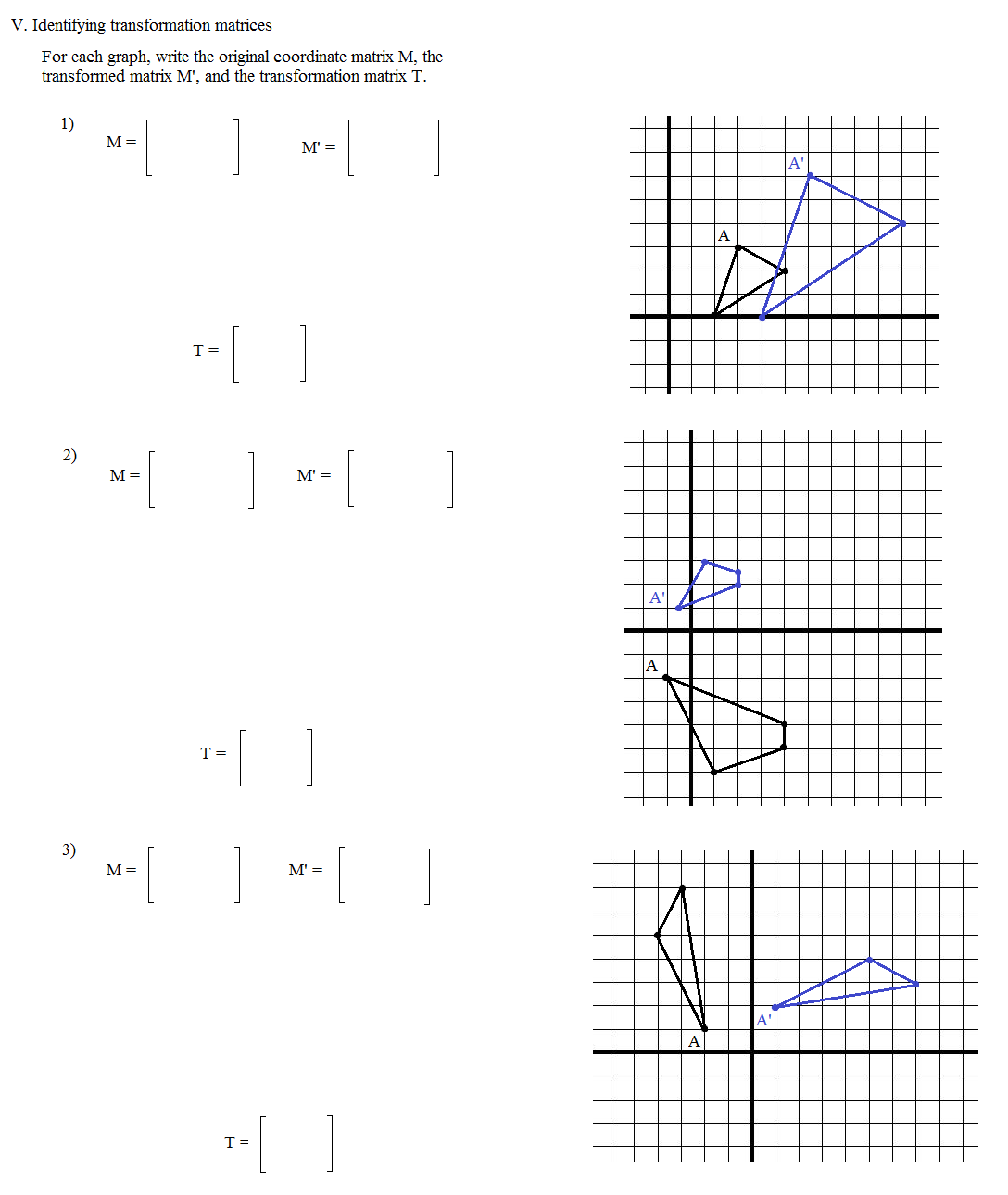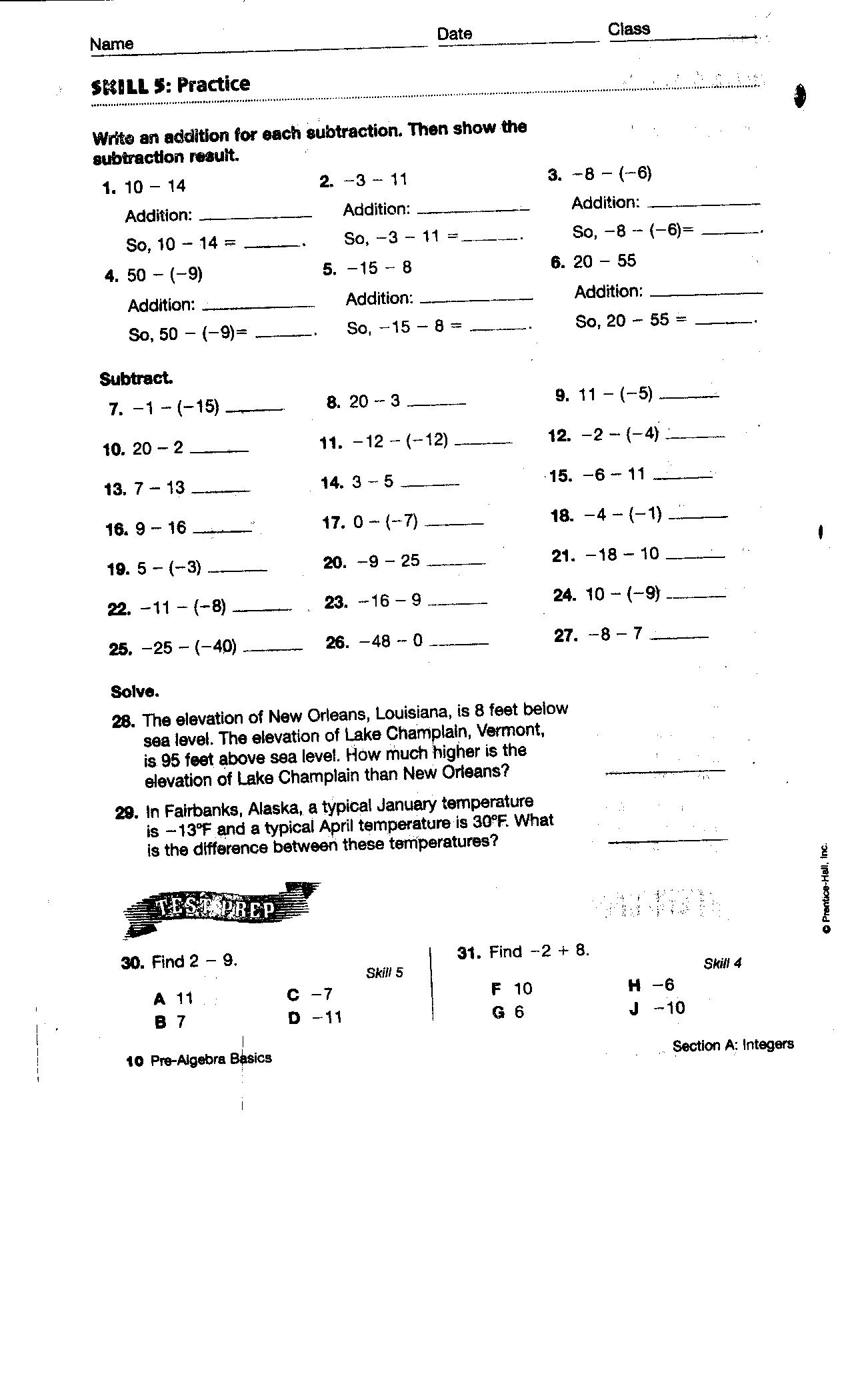Matrix Multiplication Worksheet
Are you a math enthusiast looking for a comprehensive worksheet on matrix multiplication? If so, you have come to the right place! This blog post will introduce you to a beneficial resource that focuses on this fundamental concept in linear algebra.
Table of Images 👆
More Other Worksheets
Kindergarten Worksheet My RoomSpanish Verb Worksheets
Cooking Vocabulary Worksheet
My Shadow Worksheet
Large Printable Blank Pyramid Worksheet
Relationship Circles Worksheet
DNA Code Worksheet
Meiosis Worksheet Answer Key
Art Handouts and Worksheets
7 Elements of Art Worksheets
What is matrix multiplication?
Matrix multiplication is a binary operation that takes two matrices as inputs and produces another matrix as output. It involves multiplying the elements of rows from the first matrix by the columns of the second matrix and summing the results to obtain the elements of the resulting matrix. The number of columns in the first matrix must be equal to the number of rows in the second matrix in order for the multiplication to be defined.
How is the product of two matrices calculated?
To calculate the product of two matrices, multiply each element in the rows of the first matrix by each element in the corresponding columns of the second matrix, and sum these products to obtain each element in the resulting matrix. This process is repeated for each row of the first matrix and each column of the second matrix until all elements in the resulting matrix are determined, resulting in a new matrix with dimensions equal to the number of rows of the first matrix and the number of columns of the second matrix.
How do you determine if two matrices can be multiplied?
To determine if two matrices can be multiplied, the number of columns in the first matrix must be equal to the number of rows in the second matrix. If this condition is met, then the matrices can be multiplied. In the resulting matrix, the number of rows will be equal to the number of rows in the first matrix, and the number of columns will be equal to the number of columns in the second matrix.
What is the size of the resulting matrix in matrix multiplication?
The size of the resulting matrix in matrix multiplication is determined by the number of rows in the first matrix and the number of columns in the second matrix. If the first matrix is of size m x n and the second matrix is of size n x p, then the resulting matrix will be of size m x p.
How does the order of multiplication affect the result?
The order of multiplication does affect the result. The commutative property of multiplication states that changing the order of the numbers being multiplied will not change the result, meaning that a x b = b x a. However, the associative property of multiplication does matter, as changing the grouping of the numbers being multiplied can yield different results, meaning that (a x b) x c is not always equal to a x (b x c).
Can the product of two matrices be commutative?
No, the product of two matrices is generally not commutative. In mathematical terms, if matrices A and B are multiplied together, AB is not necessarily equal to BA unless both matrices are scalar multiples of the identity matrix. This property holds true for most matrices, making matrix multiplication non-commutative in general.
What is the significance of the identity matrix in matrix multiplication?
The identity matrix serves as the multiplicative identity in matrix multiplication, meaning that when any matrix is multiplied by the identity matrix, the resulting matrix is the original matrix itself. This is significant because it allows for simplifying calculations and serves as a foundation for certain mathematical operations in linear algebra.
How does the distributive property apply to matrix multiplication?
The distributive property applies to matrix multiplication by stating that the product of a matrix by the sum of two matrices is equal to the sum of the products of the matrix by each individual matrix. In other words, if A, B, and C are matrices, then A(B + C) = AB + AC. This allows for the simplification and manipulation of matrix operations by distributing the multiplication across different matrices within an operation.
Can matrix multiplication be associative?
Yes, matrix multiplication is associative. In other words, for three matrices A, B, and C, the relationship (AB)C = A(BC) holds true, meaning the grouping of matrices does not affect the final result when multiplying them together.
In what real-world scenarios is matrix multiplication commonly used?
Matrix multiplication is commonly used in various real-world scenarios, such as in computer graphics for rendering 3D objects, in statistics for linear regression analysis, in engineering for solving systems of equations, in physics for solving quantum mechanics problems, in economics for input-output analysis, and in machine learning for neural network computations. Ultimately, matrix multiplication is integral in solving complex mathematical problems across a wide range of fields.
Have something to share?
Who is Worksheeto?
At Worksheeto, we are committed to delivering an extensive and varied portfolio of superior quality worksheets, designed to address the educational demands of students, educators, and parents.























Comments